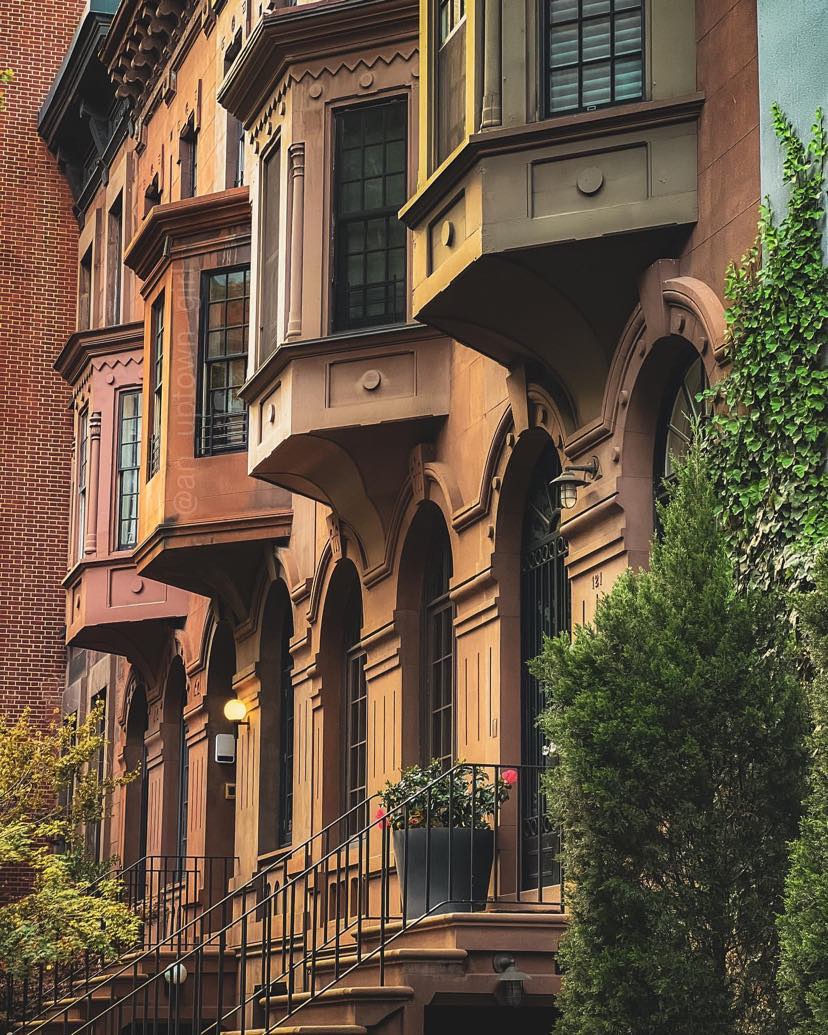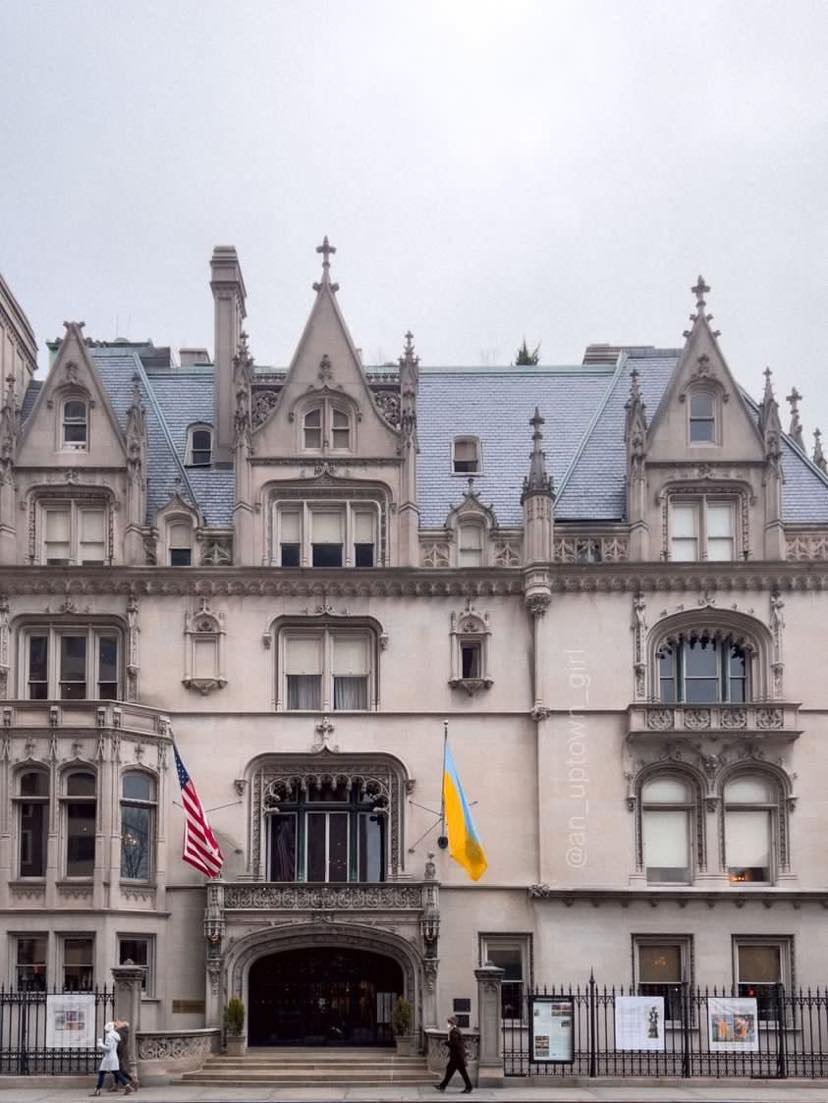There’s no shortage of architectural eye candy on the Upper East Side – from stately mansions to charming brownstones, early twentieth century co-ops and shiny new structures. The beauty of the neighborhood goes without saying. But here, we’ve narrowed down that beauty to our favorite stretches. In no particular order, these are the streets our eyes like best.
72nd between York and FDR Drive
At the northeastern corner of this dead-end street stands 527-541 East 72nd Street, a co-op consisting of four connected rowhouses collectively known as “The Black and Whites.” Built in 1894 and rebuilt in 1938, the complex is known for its glossy, red lacquer doors and unique, two-color brick facade. Outside, find a pleasant cobblestone walkway lined with benches offering East River views.

Photo by Bobby Panza
Advertisement
East End Avenue between 86th and 87th streets
The Henderson Place Historic District is lined with red-brick, Queen Anne-style townhouses of relatively modest proportions. Most of the single-family homes are about 18′ wide and come with approximately 2,500 square feet of interior space, though some may have been combined. Completed in 1882 for “persons of moderate means,” that is certainly no longer the case.

Photo by @landmarksofny
Free Upper East Side News – In Your Inbox!
78th between Second and Third avenues
The six contiguous red-brick rowhouses (208-218 East 78th Street) built during the 1860s are the most unique aspect of this block, distinctive “for [their] round-arched windows and door openings on their north (front) facades.” These buildings were designated New York City landmarks in 1978 and added to the National Register of Historic Places in 1983. These unique rowhouses are also the second oldest group of buildings in the neighborhood; the oldest can be found just a block west (157-165 East 78th Street).

Photo by @an_uptown_girl
70th between Park and Lexington avenues
“Real estate brokers sometimes refer to 70th from Park to Lexington as the best block in New York,” according to a 2014 New York Times post written in honor of another Upper East Side Street – 91st between Fifth and Madison – which the writer dubbed “The Grandest Block in New York.”
Grand it is, but we’re going to have to go with the brokers here. One standout (and Instagram favorite) is 131 East 70th Street, also known as the Grosvenor Atterbury House – an 1870s brownstone remodeled to resemble “an alien spacecraft of bumps, domes and other accretions clapped on to a vernacular brownstone, the surface alive with windows of every shape.” Today, the house is home to Creel and Gow.

Photo by @a_nan_about_town
73rd between Lexington and Third avenues
On this unique street you’ll find a handful of townhouses originally built as carriage houses for wealthy Upper East Siders between the mid-19th and early 20th centuries. According to Daytonian in Manhattan, “Marquand’s stable [at 166 East 73rd Street) was one of the first.” The architect behind this commanding structure “documented the year construction commenced, 1-8-8-3, in cast iron numbers; choosing a trendy 1880s font.”

Photo by Bobby Panza
Advertisement
95th between Park and Lexington avenues
According to Leslie Garfield, this tree-lined Carnegie Hill street is lined with 27 single family homes, many boasting bay windows and red-brick facades. One standout on the southeast corner is 1217 Park Avenue – the Dore Lyon House – an 1889 mansion with a private garage.

photo by @walkupnolaundry
93rd between Fifth and Madison
Anchored by an ivy-covered building on the corner of Madison Avenue, this bucolic street offers “a mix of old brownstones and later town-house renovations of the 1920s and 1930s,” wrote the New York Times in 2007, when renovations were taking place at several houses on this street. Two noteworthy houses include 9 East 93rd Street, a Georgian-style townhouse with a red-brick facade, and 6 East 93rd Street, a forty-foot limestone mansion.

Photo by @an_uptown_girl
91st between Park and Lexington avenues
Another Carnegie Hill beauty. Keep your eyes peeled for some interesting buildings including 112 East 91st Street, a 25′ wide single-family home originally built as a stable in 1906; 103 East 91st Street, a neo-Georgian style townhouse with a Palladian-style front window once home to author Patrick Dennis (aka Edward Everett Tanner III), the creator of Auntie Mame; and 133 East 91st Street, a beautiful red-brick townhouse with a gated front garden.

Photo by @an_uptown_girl
79th between Fifth and Madison avenues
While this busy thoroughfare may be a bit of a departure from the tree-lined streets that dominate this list, the entire southern side of the block is lined with mansions – making it impossible to overlook. This prominent row of architecture is bounded by 2 East 79th Street on the southeastern corner (home to the Ukrainian Institute of America) and 20 East 79th Street on the northeastern corner (home to Skarstedt Gallery).

Photo by @an_uptown_girl




Around the 95th St corner at Lexington is one of the ugliest blocks, leading to 96th. No trees for shade, bare walk up apts, a busy bus stop, noisy asphalt schoolyard across Lex.